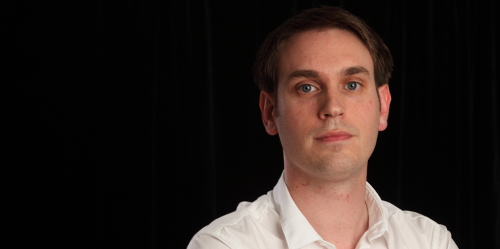
Cambridge-based startup Neul released its ‘Weightless’ communication standard called NeulNet earlier this year.
Ben Peters, head of product strategy at the firm, tells CBR how the technology could transition mobile network operator’s approach for the Internet of Things (IoT).
1. Your system is specifically designed for white-space use in the IoT sector. Why?
A lot of machine to machine (M2M) is handled over GPRS of which some will move to next generation cellular. While the end points of those technologies are quite cheap – the modem in which you would put into your IoT application – actually in volume is about $10 today. But it needs to be about $5 trending to $2, so it’s still a bit too expensive to enable IoT. A lot of these IoT applications are super low cost and if you can’t meet a sub $5 price of a modem it’s just not worth putting the connectivity in there. Connectivity has to be super cheap. There’s no way that soap dispensers are going to tolerate spending £10 on a connection, it needs to be more like 50 cents per month.
On top of that, these cellular networks were really built for voice or broadband and typically for the kind of mode where users will recharge their mobile phones. They’re built with recharging phones in mind, which doesn’t really fit for the IoT because a lot of these sensors that need to be connected actually need to last for years from a battery.
So because of battery life, because of the cost of the lowdown and because of the fact that they don’t penetrate people in buildings properly, existing cellular technologies are not actually suitable for addressing the mass IoT market.
2. Which companies are you targeting the technology at and how would they deploy it?
We’ve worked with a number of telecoms companies like Vodafone, Huawei and NSN to define the standard protocol for such a low-powered wide area networking technology that would fit into cellular operative spectrum. Essentially they would use just part of their existing GSM or LTE spectrum and deploy this technology as a software update to their existing infrastructure. So you could think of cellular operators like Vodafone, for example. It has 25 separate GSM sub carriers in the UK and the idea would be that they give up one of those sub carriers to run this entirely different air interface we’ve developed.
In order for that to happen, it has to go through a 3GPP standardisation process so everyone can build against the same standard and have interoperable equipment – which is an absolute must have for IoT. That standardisation process should take in the order of two years.
3. Do you face any challenges working with these mobile network operators (MNOs)?
Standardisation is a challenge. There are many big players in that process like Qualcomm and Ericson and NSN who obviously have very large portfolios and have an interest in making sure their technology is part of that standardisation process.
The other challenge is that it takes time. These are big companies and typically the MNO’s marketplace is dominated by big players. So for small companies it’s quite challenging to gain a foothold there.
4. What partnerships have you lined up for the future?
So we’re already with the companies in that MNO special interest group so companies like Vodafone Huawei. And we’re already partnering with companies like BT and we’re growing our ecosystem partnership with companies, which build application layers on top of the connectivity. The IoT ecosystem with many different players doing different bits. I think part of Neul’s job is to try and bring it together and simplify it for the end customers.
5. You’re also launching the UK’s first Smart City at the end of the second quarter. What does the smart city project involve?
It’s a UK city and it’s really the first example of this type of low powered wide area networking deployment in the UK. We’ll be announcing the name of the city towards the end of this quarter.






